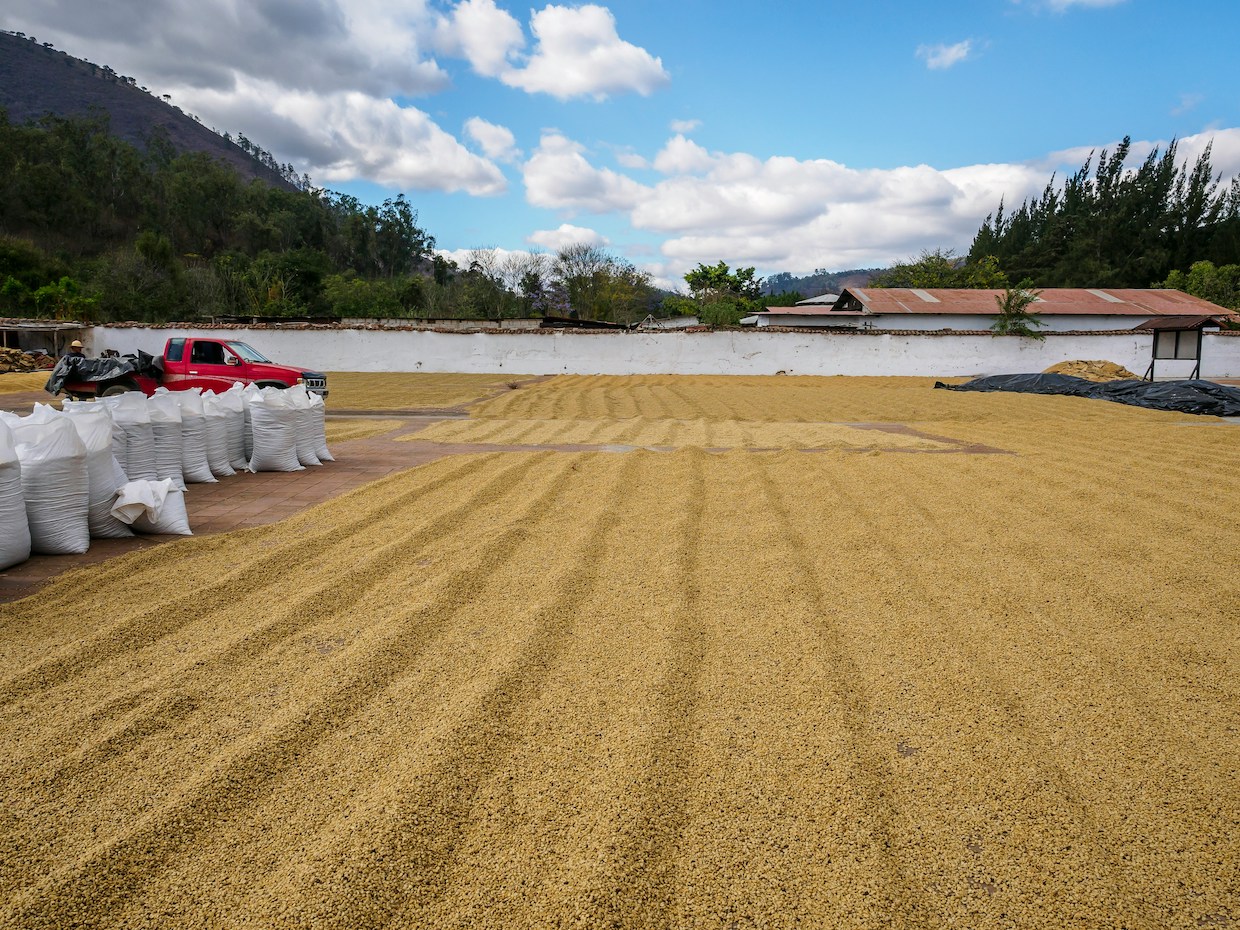[ad_1]
The Guatemalan nationwide espresso affiliation Anacafé led a complete set of geographic surveys to redraw the map of the nation’s espresso lands map final 12 months.
The trouble has resulted in a clearer image of one of many world’s largest coffee-producing international locations, the place smallholder espresso farmers — representing 97% of the whole variety of growers — proceed to be challenged by comparatively excessive fertilizer prices, labor shortages and entry to processing infrastructure.
These and different points are outlined within the new USDA Overseas Agriculture Service annual report on the Guatemalan espresso sector.
[Note: This is part of a series of stories that will explore USDA FAS annual coffee reports. The information agency typically delivers more than a dozen country-level reports on the coffee sector, each coming from different authors and field offices.]
Inexperienced Espresso Manufacturing
- The USDA FAS forecast for Guatemalan espresso manufacturing noticed a slight lower to three.25 million 60kg luggage, down from 3.26 million within the 2023/24 12 months.
- Regardless of decrease fertilization prices because the pandemic period, many farmers proceed to face elevated manufacturing prices, resulting in points sush as leaf rust illness and pest. These points are being exacerbated by an absence of labor on account of migration, in keeping with the report.
- Help and Applications: The Guatemalan nationwide espresso affiliation Anacafe is supporting producers by extension companies, in addition to by its ongoing Sustainable Profitability Program, designed to assist espresso farmers be higher entrepreneurs. There are actually 21,358 hectares belonging to three,282 producers by this system.
Guatemala Espresso Map Replace
- Anacafe led a complete geographic survey of Guatemala’s espresso lands, leading to a new espresso map. The map reveals a complete of 251,265 hectares with secure espresso plantations, 124,734 hectares of recent or beforehand unreported plantations, and a deduction of 49,336 hectares that not have espresso.
- Guatemala’s espresso planted space for market 12 months 2024/25 is forecast at 376,000 hectares, with 1.6 billion mature timber and 183 million non-bearing timber. Arabica espresso continues to dominate manufacturing, at 99%.
- Arabica plantations in Guatemala stay principally underneath shade, with shade tree species rising as producers goal to enter the specialty espresso market and acquire environmentally pleasant certifications. Regardless of will increase in planted and harvested areas, manufacturing has not elevated, indicating a concentrate on high quality and sustainability, the authors famous.
Yields
- Guatemalan espresso manufacturing presently comes from 354 large-scale farmers (0.28% of complete), 3,636 medium-scale farmers (3%), and almost 97% smallholder farmers, with every group contributing 25%, 31%, and 44% of the harvest, respectively.
- Many small-scale farmers have diminished fertilization on account of prices, which the company stated is more likely to influence current and future harvests.
- Extra farmers are starting to discover low-cost applied sciences in varied levels of espresso manufacturing, together with pruning, harvesting, and milling.
Commerce/Exports
- Guatemala ranked ninth globally in espresso exports in 2022/23, with espresso accounting for 8% of the nation’s agro-industrial exports, making it probably the most important export product. Guatemala was the fourth largest arabica exporter globally in 2022/23.
- The US stays the largest importer of Guatemalan espresso, although complete exports fell by 10% in 2022/23. North America buys 49% of Guatemala’s exports, adopted by Europe (26%) and Asia (22%).
- Along with espresso beans, Guatemala additionally exports roasted and soluble espresso. Soluble espresso exports elevated by 6% in 2022/23, with El Salvador being the most important importer, whereas roasted espresso exports elevated by 11%.
Value Realities
- The report notes that as a result of most espresso farmers lack the infrastructure to course of espresso for export, they depend on intermediaries or bigger farms. Bigger farms pay “10% above middlemen” however require farmers to move the espresso, additional including prices to smallholders, the report states.
- Most smallholder farmers promote their espresso as cherry, incomes $21-22 per 100 kilos in 2023/24, which is considerably decrease than costs for parchment espresso, in keeping with the evaluation.
- Anacafe advised the Guatemalan submit that it’s involved in regards to the reducing worth differential between specialty and non-specialty espresso, which has dropped from over $18 to $3 per 100 kilos. The development might drawback Guatemalan espresso farmers who’re producing specialty espresso, in keeping with sources within the report.
Home Consumption
- Guatemala’s espresso consumption is anticipated to stay secure at 651,000 60-kilo luggage in 2024/25, just like the estimate for MY2023/2024.
- Consumption in 2022/23 exceeded earlier estimates by 4%, indicating a rising development in espresso consumption in Guatemala.
- Soluble espresso continues to exceed roasted floor espresso by quantity share, representing 58% of complete consumption.
Feedback? Questions? Information to share? Contact DCN’s editors right here.
Associated Posts
[ad_2]





